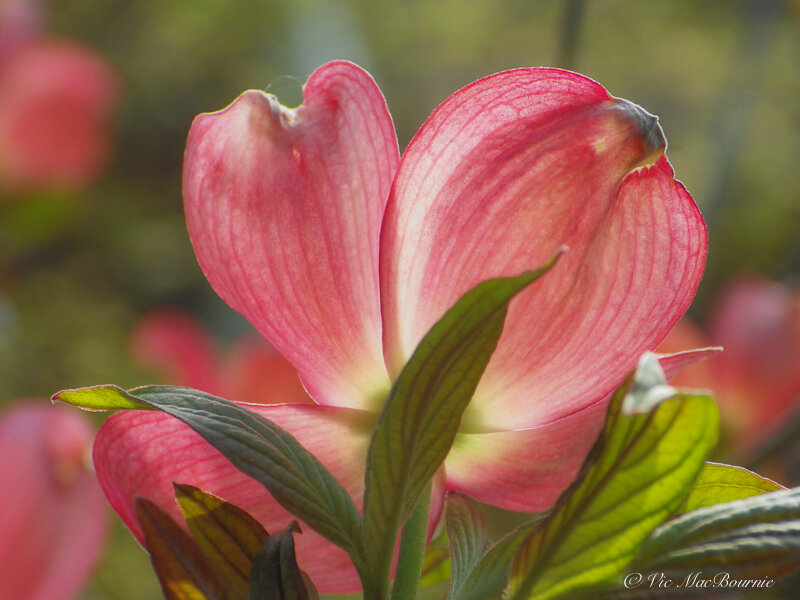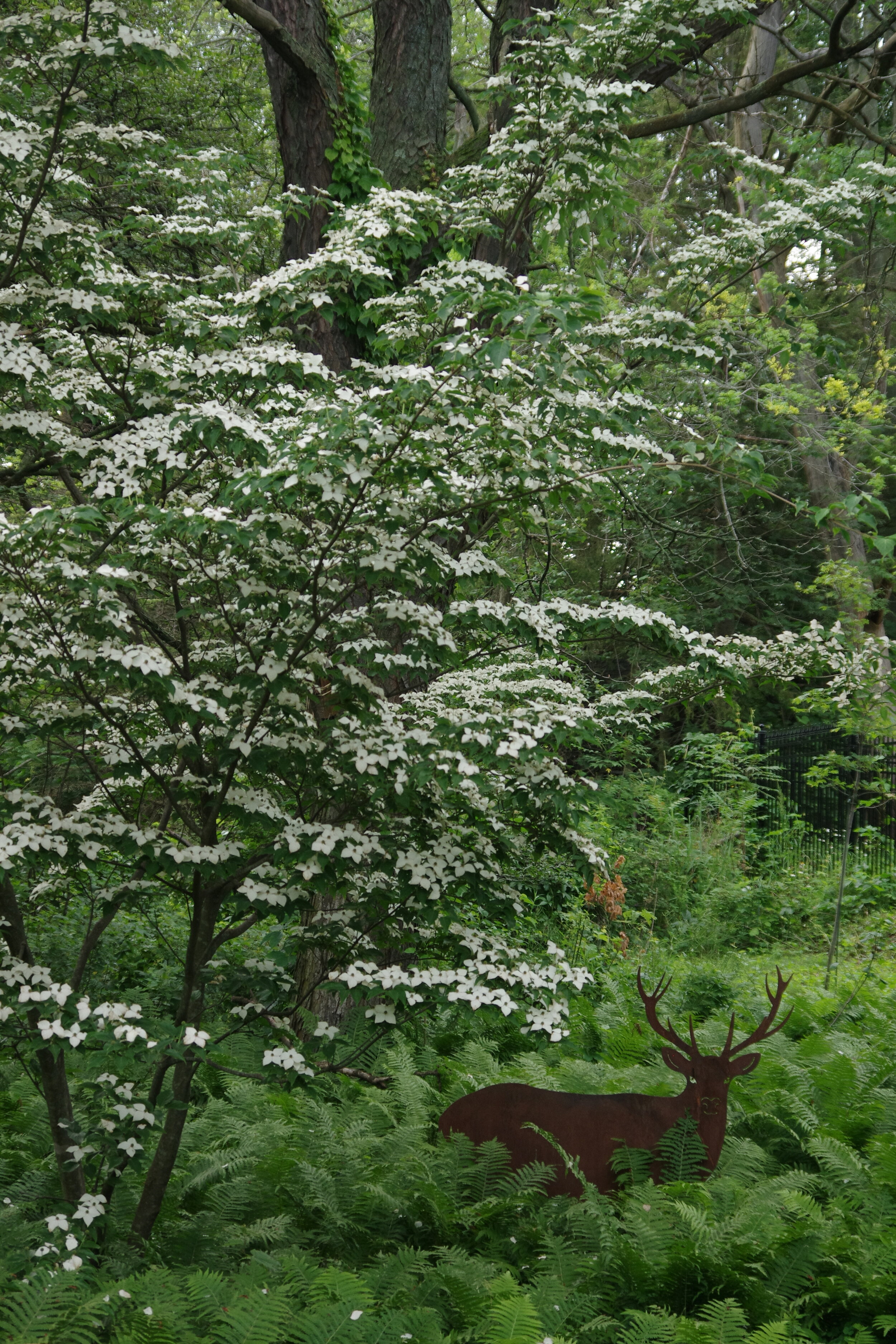Building your Woodland: One Tree at a time
Dream of what your woodland garden can be and we will work together to make it real. By using native and non-native trees, plants and flowers, you can transform your garden into a wildlife haven. Then spend the day photographing the nature around you.
Woodland wildlife garden needs time to mature
A woodland garden can be as big or as small as you want. Start with a single tree in your yard and try to imagine what that tree can become.
Remember a woodland garden can take time to mature into perfection. Like a freshly-built home that lacks the layers living brings to it, a woodland needs that same time to develop the multiple living layers that make it the inviting place we want to experience. It too needs its spirit; one that starts deep in the soil and stretches high into the upper layers of the forest canopy. If you are just starting out developing your woodland garden design, the first rule to understand is that a woodland garden is all about layers. Three layers really, but you could argue four even six and still be correct.
It all starts with the upper canopy
The top layer, the upper-level canopy, is what builds the strength of the woodland over time. If you do it right, the middle layer is where much of the beauty resides. Then there is the shrub layer and finally the ground layer, also not without its share of beautiful things. The ground layer, appropriately made up of ground covers, forms a protective layer that encourages all that is above it to prosper.
Early morning offers a different experience in the Woodland for both photographers and dreamers. Get up early, catch the light, and sneak in an afternoon nap.
Maybe, if you are like me and bought into an older neighbourhood, you are already blessed with a mature tree or several that helps to create the critical upper canopy. If you are not blessed with any large trees on your site, that large maple growing in your neighbour’s yard casting its lovely shadow over your yard will do the trick too. Remember though, your neighbour could cut that tree down and your upper canopy can disappear in an afternoon. Better to plant your own as soon as possible as a backup to your grumpy neighbour’s tree.
This photo illustrates the layering of our mature woodland garden. A large locust and tulip tree form the upper canopy, while a mautre Cornus Kousa in full flower forms part of the mid-canopy. The kousa is joined by serviceberry, redbuds and Cornus Florida in the lower canopy of this area of the garden. Ostrich ferns fill in as the primary ground cover.
Large trees form the upper canopy
When we talk upper-level canopy, we’re talking the big boys of the tree world.
Think maples, locusts, lindens, oaks and a host of other native trees that will grow large enough to eventually tower over the garden.
If you live in the Carolinian zone (link to my post) or a similarly appropriate area and need a quick canopy, consider planting a couple of Tulip trees. They are fast-growing native trees, growing up to 35 metres tall. In fact, they are among the tallest and straightest trees in the forest. In fact, they were often the tree used as telephone poles because of their straight growth habits. Their canopy can be trimmed up high as they shoot to the sky, and the shade they throw is open enough to allow understorey plants to grow happily.
Tulip trees have a spectacular yellow-green 5 centimetre long spring blooming, tulip-shaped flowers. Although the fast-growing tree is not the best host of insects and caterpillars that provide food for birds, the seeds of the tulip tree grow every year and are a source of food for birds and small mammals.
Oaks are kings of biodiversity
If you are looking for the perfect tree to form your upper canopy, you would be hard pressed to do better than one of the mighty oaks. Consider planting an oak near your tulip trees where it will grow up to provide a future canopy after the tulip trees have served their immediate goal of providing a fast and effective canopy in the short-term.
What makes Oak trees so important?
As Douglas W. Tallamy explains in his book Bringing Nature Home: How you can sustain wildlife with Native Plants, (link to my review of the book) a single white oak tree can provide food and shelter for as many as “22 species of tiny leaf-tying and leaf-folding caterpillars.” These combined with all of the other “lepidopterans (moths and butterflies), heteropterans (true bugs), homopterans (aphids, plant hoppers,and scales), thysanopterans (thrips), orthopterans (katydids, grasshoppers, and crickets), … that develop on white oaks are considered s well, you can appreciate how important this one plant species is to the mintenance of biodiversity.
In fact, a single oak can support up to 534 different species and leads the list of important native trees providing biodiversity in our forests and woodlands.
In Tallamy’s list, The willow is second supporting 456 species followed by cherrry and plum (also 456); birch trees (413); poplar, cottonwood (368); crabapple (311), Maple, box elder (285), Elm (213); pine (203); Hickory (200); Hawthorn (159); spruce (156) …”
If attracting birds and creating a biodiversity of insects, caterpillars, moths and butterflies in your garden is important to you, I urge you to get Tallamy’s book and use it as a bible for creating your backyard landscape design.
Blessed with mature trees in our yard
When we bought our home here in southern Ontario some 25 years ago, my wife and I were blessed with several large trees on the property, including two lovely locust trees, a large linden and Austrian pine in the backyard and two large maples in the front yard of the property. Since then, more trees big and small (at last count 28) have joined the originals to help form the foundation of our woodland.
The understorey: Where the (real) fun starts
The middle layer is the one that can really shine in the woodland.
This is where you can introduce a myriad of flowering trees. Think flowering dogwoods, both the native variety (Cornus Florida) with a multiple of hybrids or the prolific Kousa Dogwoods that flower later in the season after the leaves appear on the branches. A combination of the two gives you a magnificent show from early spring into summer. Then, if you have room, intermingle a couple of Redbuds (link to my post on Redbuds) or Serviceberries between the dogwoods. Their ethereal flowers are absolute showstoppers in any garden big or small.
And, if that’s not enough, how about a couple of azaleas growing beneath the Dogwoods, Serviceberries and Redbuds. That’s a showstopper.
These are just a few ideas to think about while you contemplate your Woodland. Future posts will delve a little deeper into the different layers, so stay tuned. For example here is a post on three of my favourite groundcovers. Here is another post on a favourite groundcover for a hot dry location. This post looks into moss as a ground cover and plants that create a similar experience as moss in the garden.
I would love to hear some of your planting ideas for your top two layers your Woodlands. Share them with us below in the comment section.
This page contains affiliate links. I try to only endorse products I have either used, have complete confidence in, or have experience with the manufacturer. Thank you for your support.



